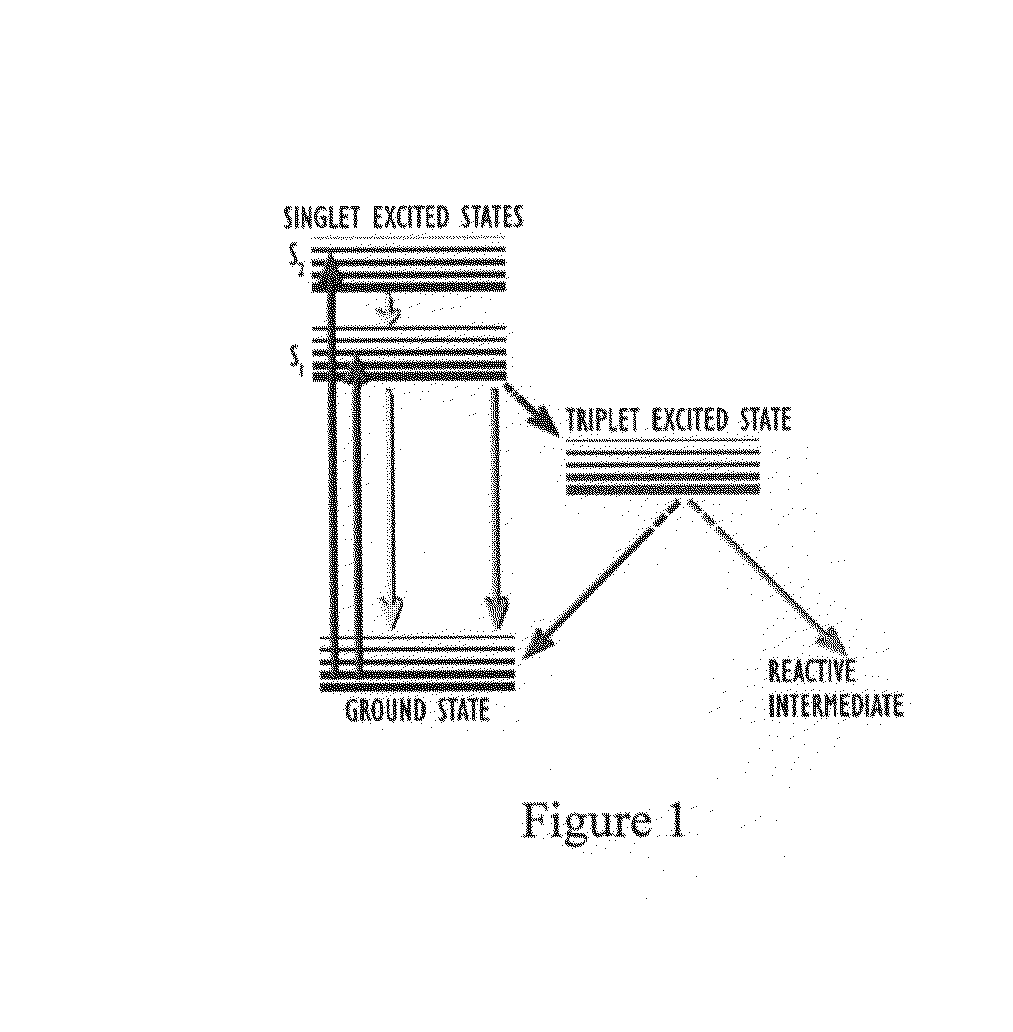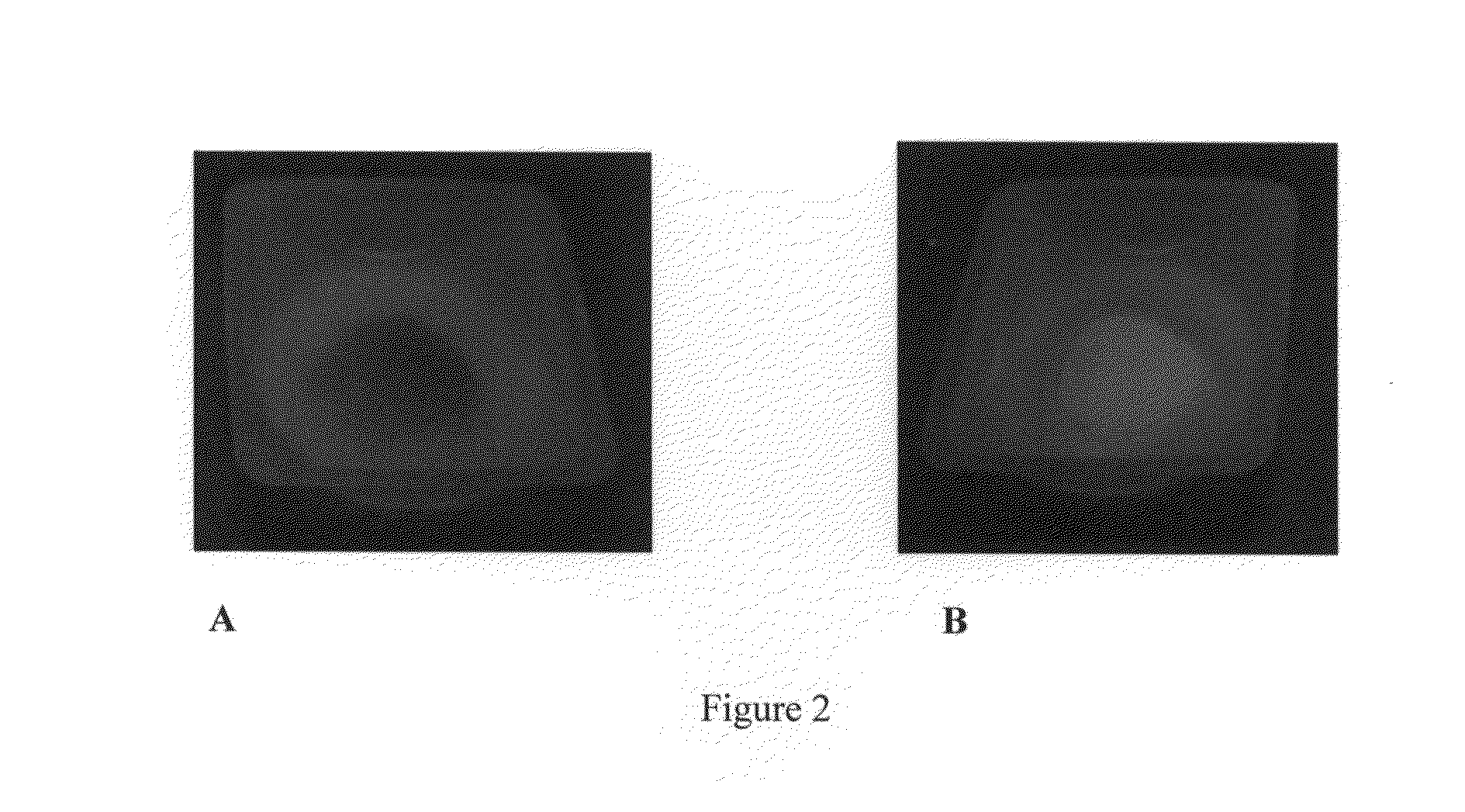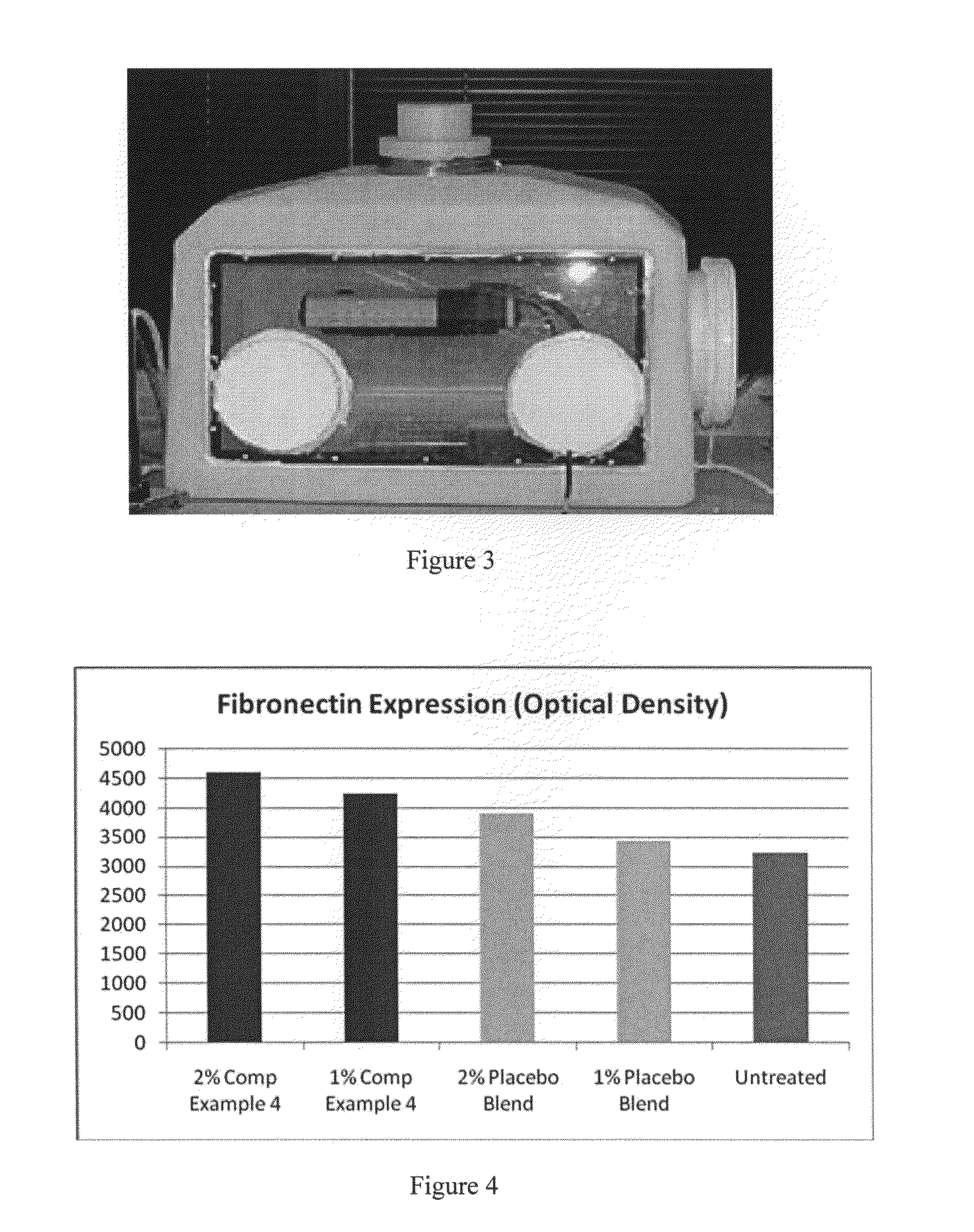Topical compositions and methods for influencing electromagnetic radiation on cutaneous extracellular matrix protein production
a technology of electromagnetic radiation and composition, applied in the field oftopical composition, can solve the problems of increasing the risk of skin cancer, and reducing the effect of skin aging
- Summary
- Abstract
- Description
- Claims
- Application Information
AI Technical Summary
Problems solved by technology
Method used
Image
Examples
example 1
Preparation of the Proanthrocyanin / Polyphenol-Containing Plant Extracts
[0049]An extract of curcuma was made by blending 50 g of commercially available curcuma powder in 450 g of 99% anhydrous 2-propanol for 30 minutes. This blend was filtered through a 1.6 μm glass fiber filter paper and the clear liquid was collected.
[0050]By following the same method, a safflower extract, a capsicum extract and an acai extract were prepared using 50 g of safflower powder, 50 g of capsicum powder, and 50 g of acai powder respectively.
example 2
Coating of the Mineral Powder with Proanthrocyanin / Polyphenol-Containing Plant Extracts
[0051](1) Proanthrocyanin / polyphenol-containing curcuma extract-coated mineral powder
[0052]A proanthrocyanin / polyphenol-containing curcuma extract-coated mineral powder was prepared by blending 25 g of calcium triphosphate and 75 g of the curcuma extract from Example 1 for 30 minutes. The blend was filtered through a 1.6 μm glass fiber filter and the powder was dried at 40° C. in a 28 in. Hg vacuum for 4 hours to provide a powder of proanthrocyanin / polyphenol-containing curcuma extract-coated calcium triphosphate.
[0053]The uncoated calcium triphosphate powder (A) and the curcuma extract-coated calcium triphosphate (B) were examined under long wavelength UV radiation respectively. The images were shown in FIG. 2. The presence of the proanthrocyanin / polyphenol coating is demonstrated by the appearance of red fluorescent light coming off powder B under the influence of the UV light.
[0054](2) Proanthr...
example 3
Blending of the Amino Acids with the Proanthrocyanin / Polyphenol-Coated Mineral Powders
[0060]A blend was prepared by mixing the following proanthrocyanin / polyphenol-coated mineral powders in a ball mill at 50 rpm for 15 minutes: 10 g of curcuma proanthrocyanin / polyphenol coated mineral powder, 4 g of capsicum proanthrocyanin / polyphenol-coated mineral powder, 10 g of safflower proanthrocyanin / polyphenol-coated mineral powder and 6 g of acai proanthrocyanin / polyphenol-coated mineral powder, all prepared according to example 2, with 29.8 g of calcium carbonate, 66 g of trimethyl glycine (Betaine), 26 g of alanine, 16 g of glutamic acid, 8 g of proline, 0.2 g of hydroxyproline, 8 g of arginine, 8 g of aspartic acid, and 8 g of serine. The blend was then sifted through a 50 μm sieve and collected.
PUM
| Property | Measurement | Unit |
|---|---|---|
| wavelengths | aaaaa | aaaaa |
| wavelengths | aaaaa | aaaaa |
| wavelengths | aaaaa | aaaaa |
Abstract
Description
Claims
Application Information
 Login to View More
Login to View More - R&D
- Intellectual Property
- Life Sciences
- Materials
- Tech Scout
- Unparalleled Data Quality
- Higher Quality Content
- 60% Fewer Hallucinations
Browse by: Latest US Patents, China's latest patents, Technical Efficacy Thesaurus, Application Domain, Technology Topic, Popular Technical Reports.
© 2025 PatSnap. All rights reserved.Legal|Privacy policy|Modern Slavery Act Transparency Statement|Sitemap|About US| Contact US: help@patsnap.com



